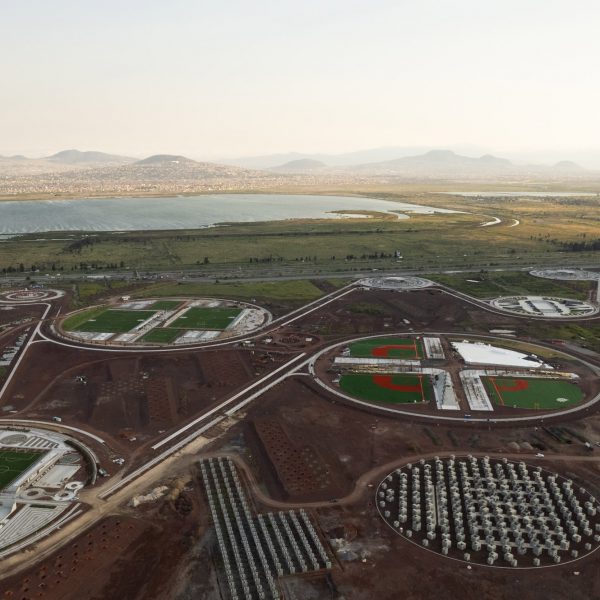Architect Iñaki Echeverria has completed the first phases of an eco-park three times the size of Manhattan in Mexico City, using some of the infrastructure of the cancelled Foster + Partners-designed airport.
Named the Lake Texcoco Ecological Park, the project entailed the regeneration and building of public infrastructure on a massive wetland environment on the eastern side of Mexico’s capital city. It opened to the public last month.
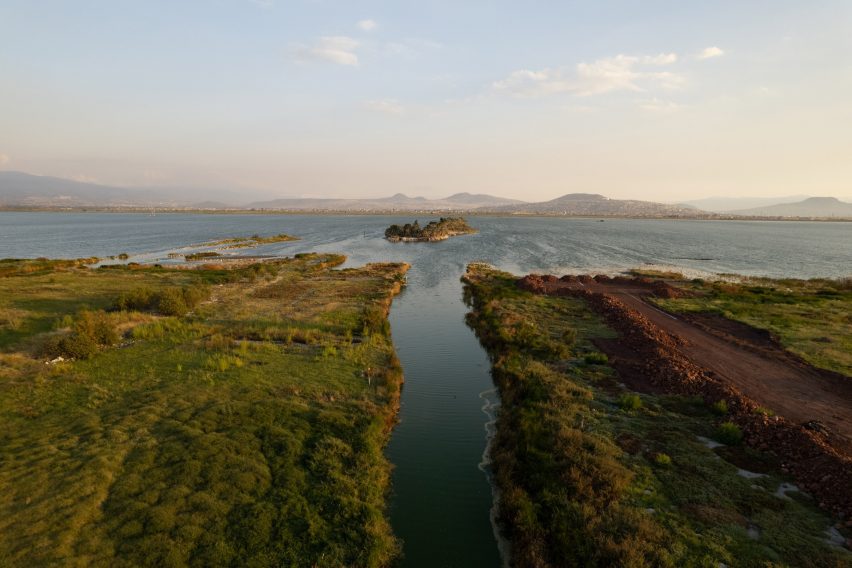
The project covers 14,030 hectares of land, making it one of the largest urban parks in the world, and is protected by federal decree as an ecological site. It was designed to mitigate the effects of density and climate change – and to improve communal welfare.
Echeverria, who accepted the commission of the project on the condition he also became the director of the park, said that the project is “a key to the larger regeneration of the area”.
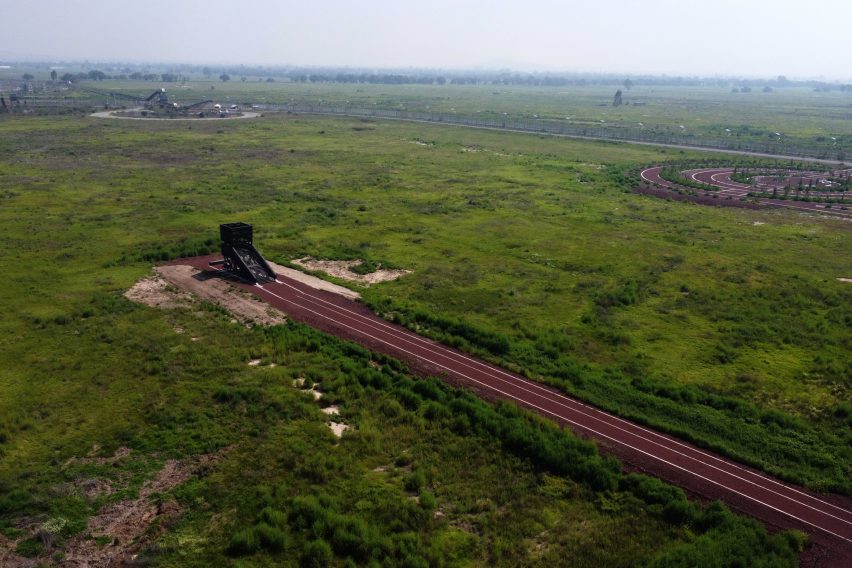
“This is not really a project about Mexico City – it is a larger endeavour, it’s the entire valley,” Echeverria told Dezeen.
“By itself, it cannot guarantee the future of the valley, but it’s a key to the larger regeneration of the area,” he continued.
“Ecological restoration is not only about aesthetics it’s about subsistence.”
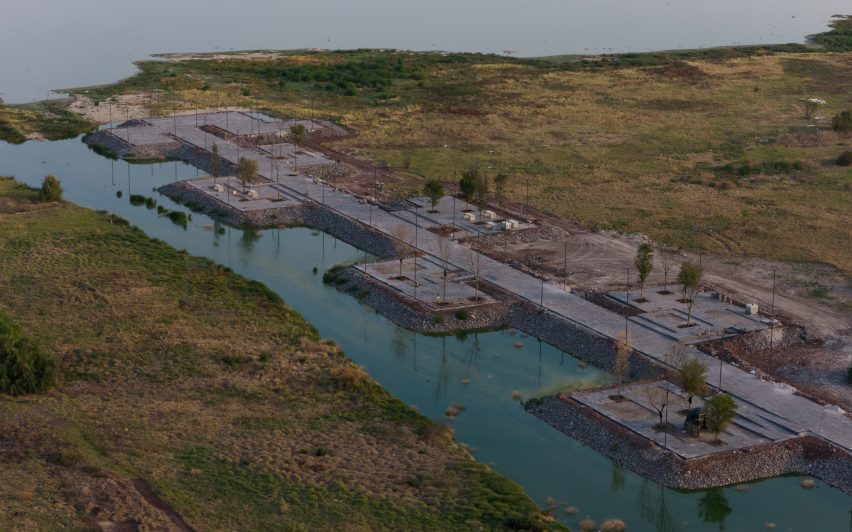
Once the site of one of the massive lakes that filled the Valley of Mexico in pre-colonial times, Lake Texcoco Ecological Park sits on highly salinated land and is covered by lakes, informal settlements and agriculture. It is now bordered on all sides by water filtration systems and dense residential neighbourhoods.
Much of the project entailed the restoration of the wetlands, including the building of greenhouses to grow and plant native species in the area. The total park is nearly three times the size of Manhattan.
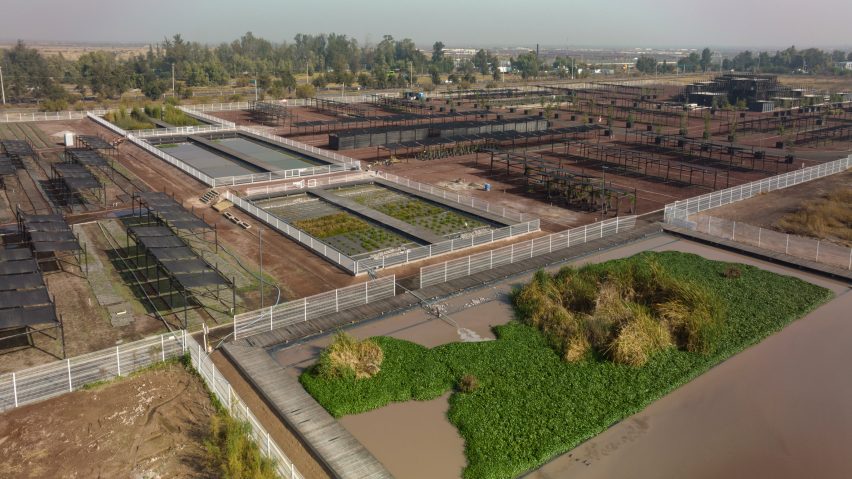
Buildings such as a viewing platform, visitors centre, sculptural pavilions and a sports park was constructed, the latter on the portion of the park that was allotted to the Foster + Partners-designed airport that was scrapped after a public referendum in 2018.
At the time, local architects criticised the referendum and cancellation, with Mexican architect Fernanda Canales saying that the move was “completely against the law” and based on personal rather than public interest.
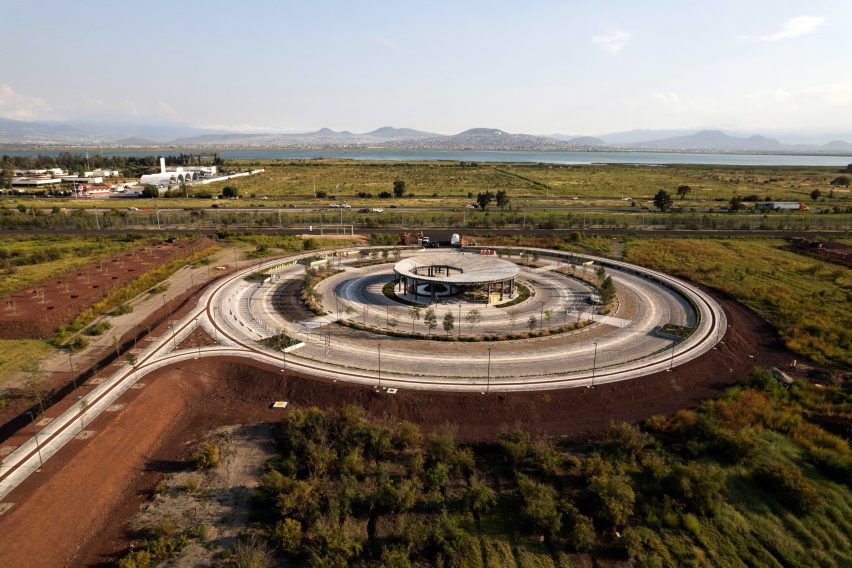
Echeverria has written about potential uses of the park since the early 2000s and began work on a concept that led to the current outline before the announcement of the park. He said that “rhetoric” was used to obfuscate prior attempts to preserve the ecology of the site, which he said goes back to at least the early 1900s.
“There is this idea that somehow this project of regeneration stopped the airport,” he said.
“I look at it the other way around; it’s it was the airport that stopped the project of regeneration.”
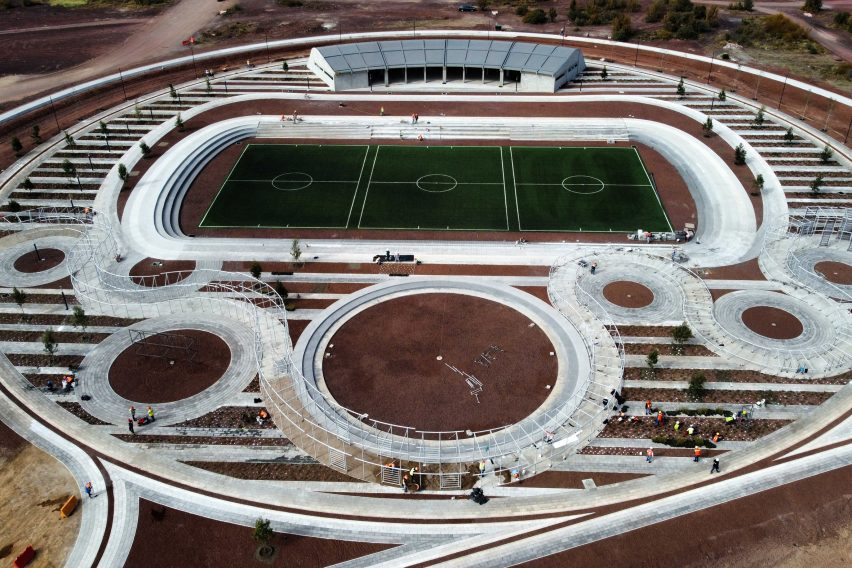
He said that up until the 1970s, the park was not “desiccated” and that the high salinity of the soil has always made it difficult to build.
The team used aspects of the airport’s infrastructure and roads to facilitate the building of the sports park – including the recycling of one of the bridges for public access to the land – to minimise impacts on the ecology.
We found a lot of concrete and barren land, so we decided that whatever we were going to build more intensely in terms of architecture would happen there and the rest would be less humanized or urbanized.
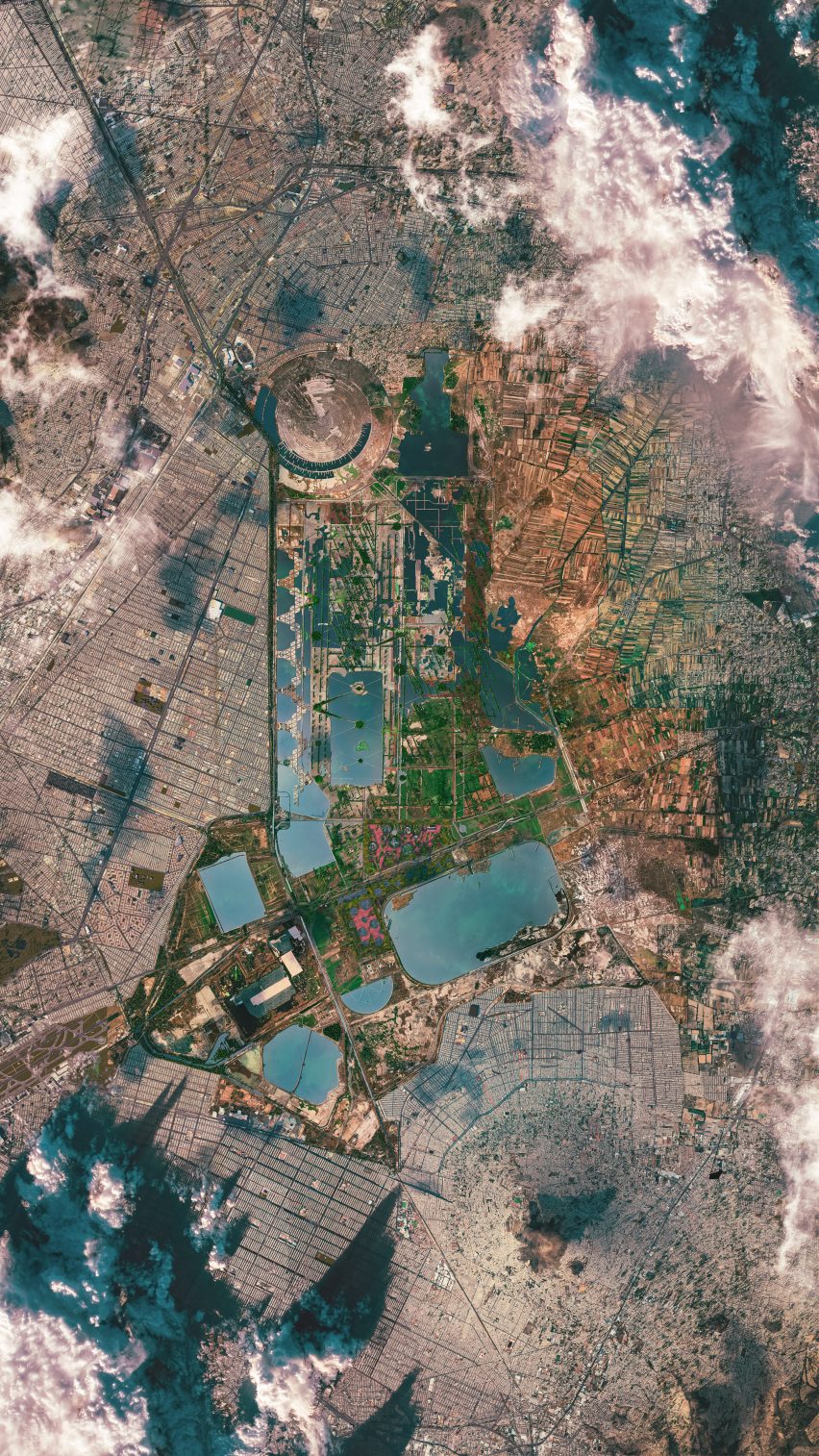
It includes several pitches that are organised as “islands” to minimise the impact and also to preserve the sports facilities during the annual flooding of the area.
He said that the project will bring both social and environmental benefits, in the lowering of surrounding temperatures due to the regenerated ecosystem and the cultural benefits of gathering for events and observation of the landscape.
Echeverria also noted that the presence of a water filtration system and infrastructure around the park allows for the “blue and green infrastructure” to be more rationally integrated into the city in phases rather than hard boundaries.
“This project is what I’ve been calling for a while soft infrastructure. or soft engineering,” he said.
“Engineering has to move on to something much more sensible, where you occupy the same space in much more efficient terms.”
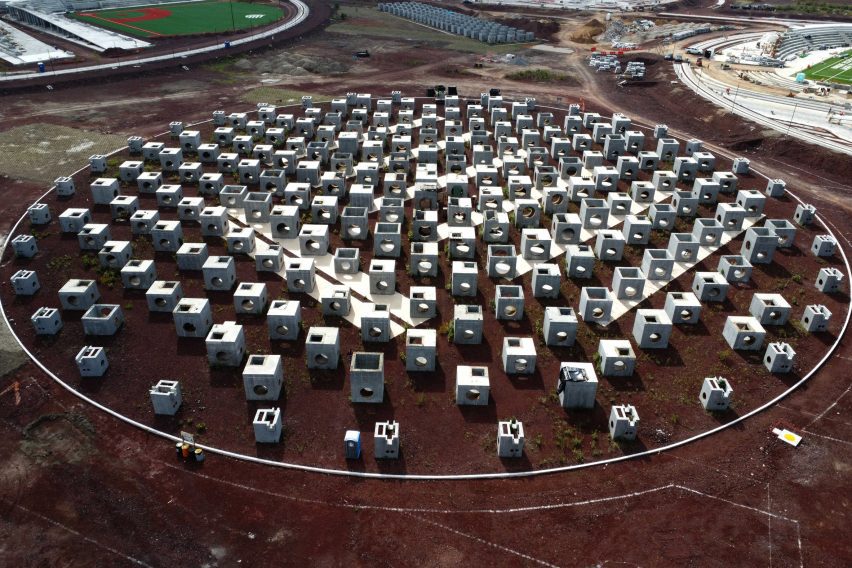
More than 11,000 people worked on the Lake Texcoco Ecological Park over the last decade, and Echeverria hopes that they will be able to continue adding aspects to the project. Though, he said, with the new administration in place at the top of the federal government it’s “unclear” what the next steps are.
Other regeneration projects include a landfill in New York converted into a nature preserve by landscape studio Field Operations.
The photography is courtesy of Iñaki Echeverria.

